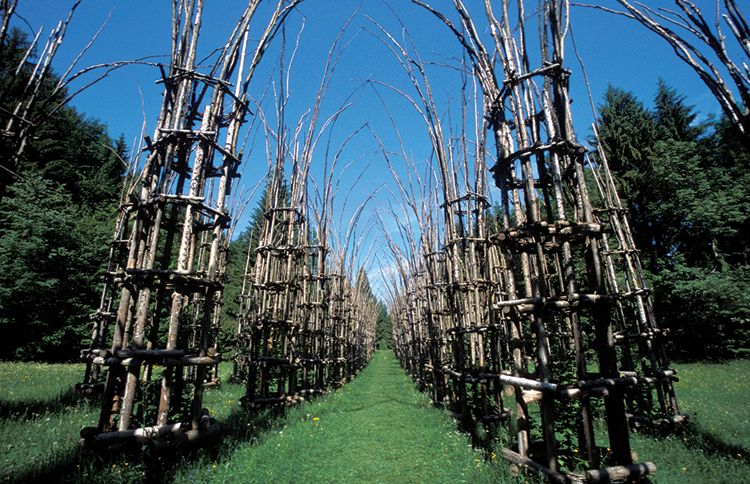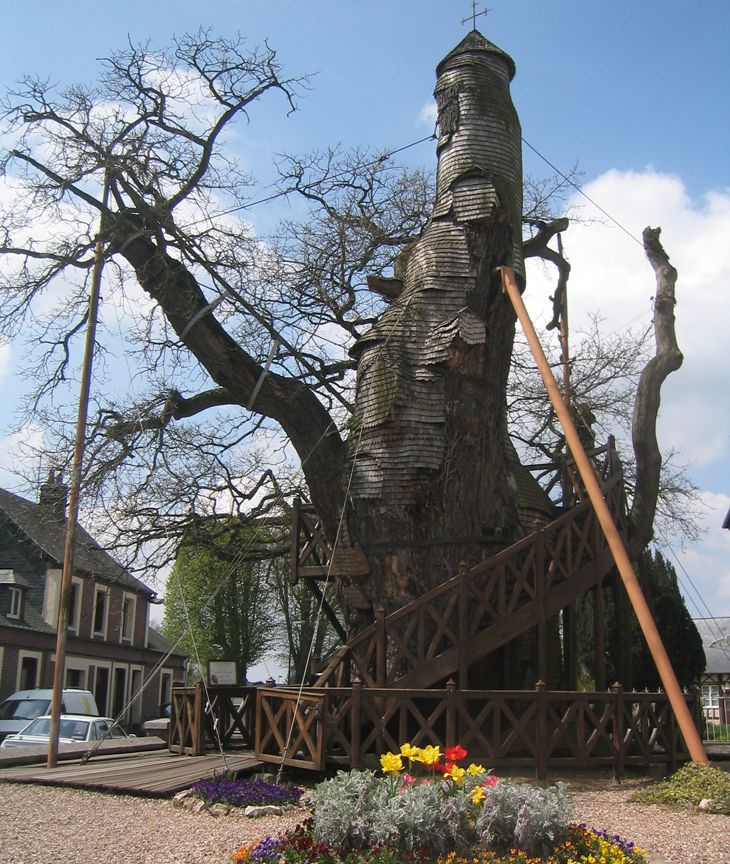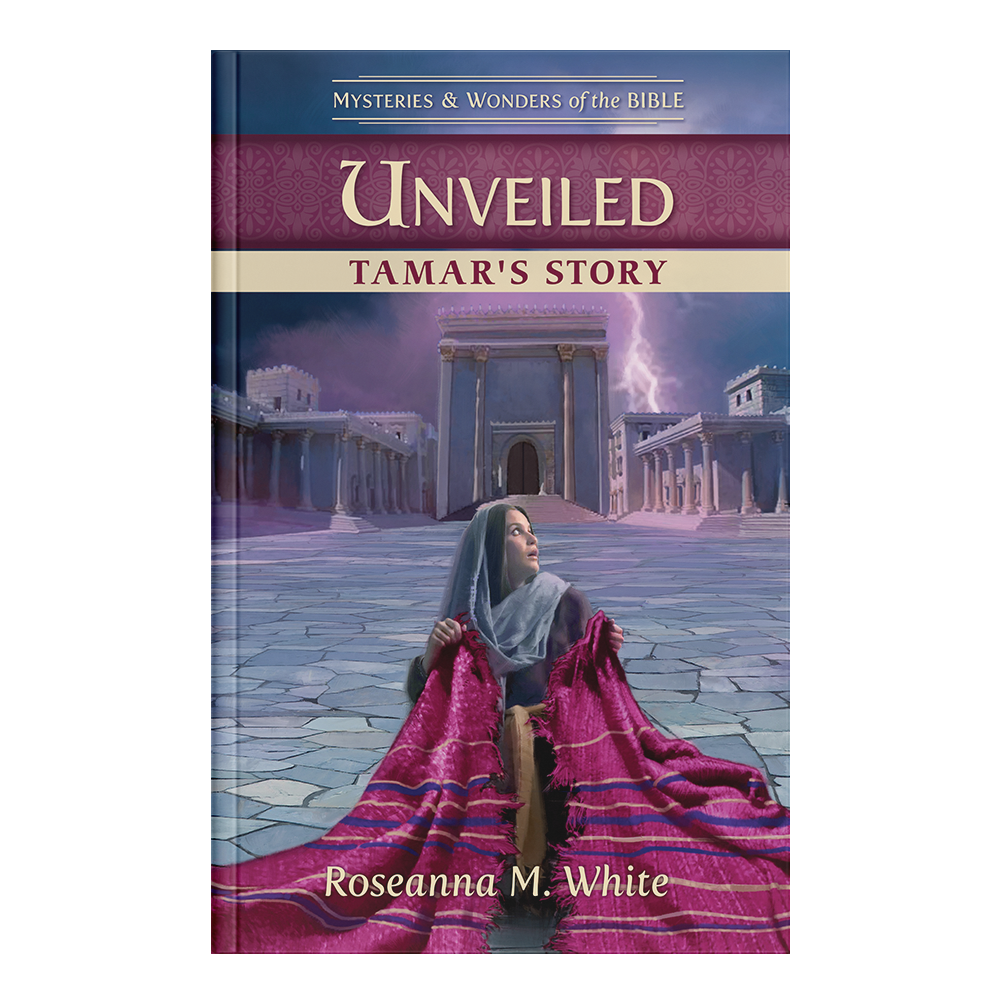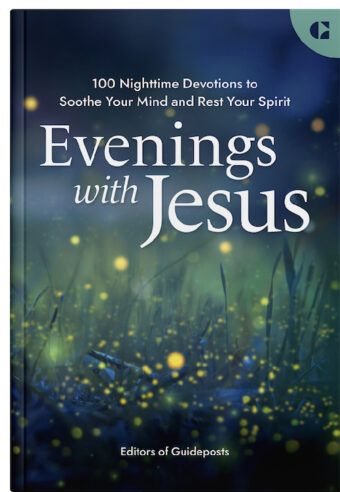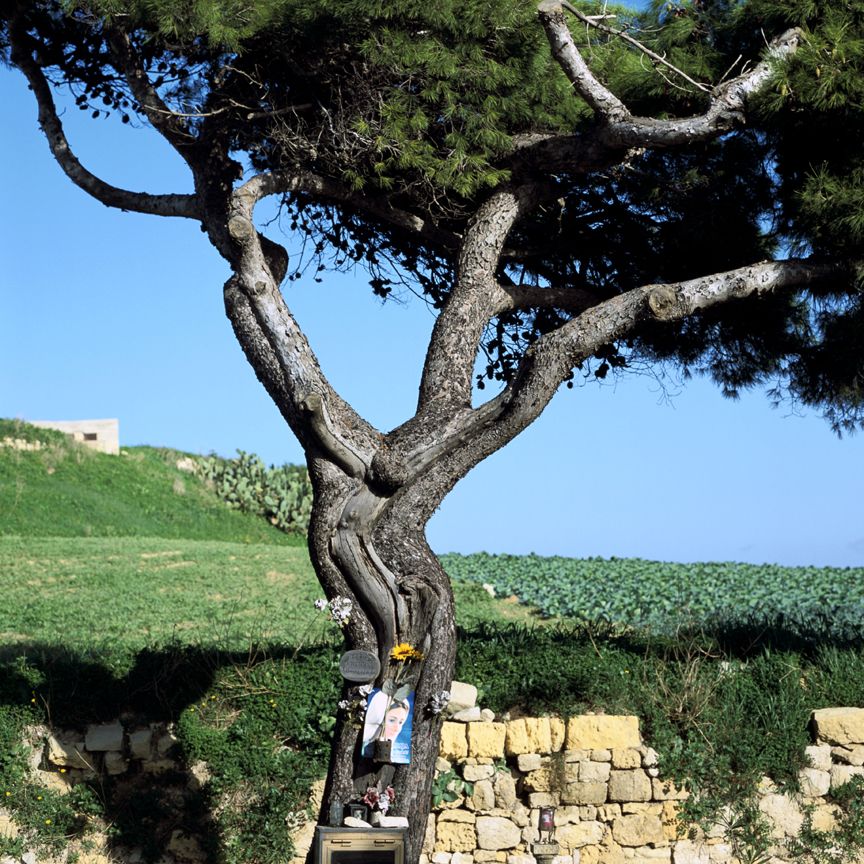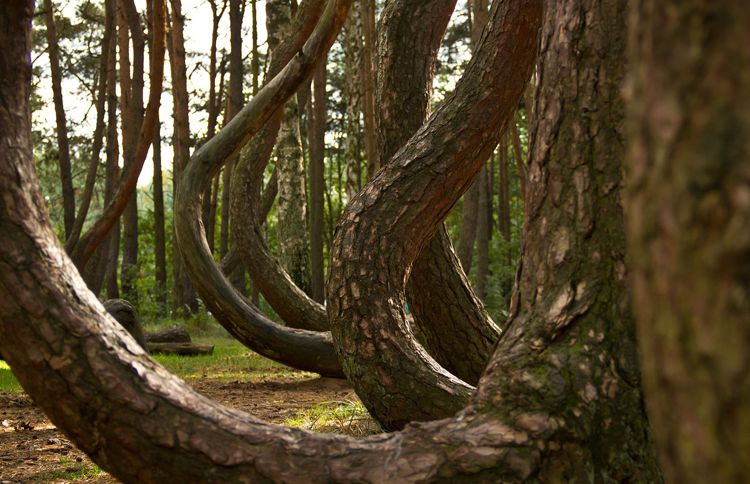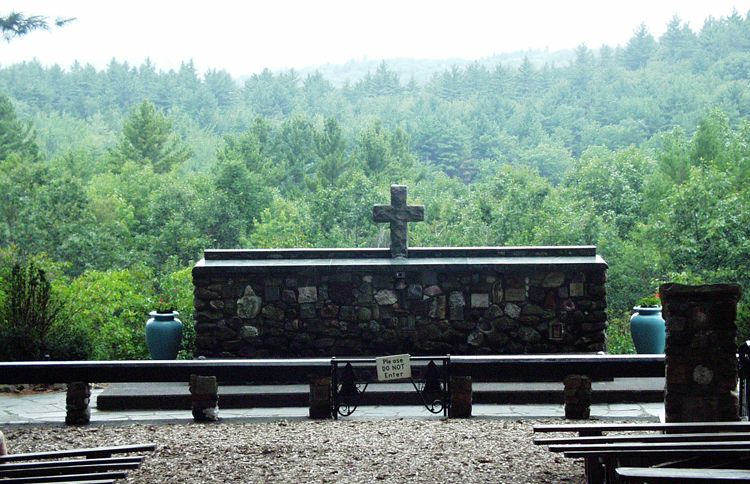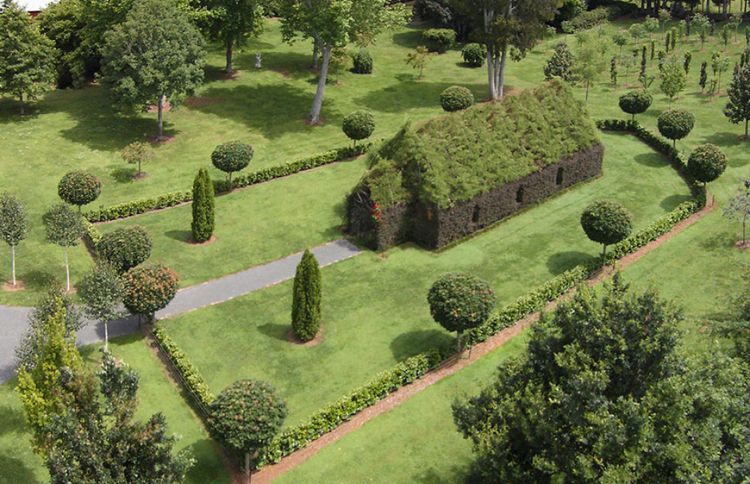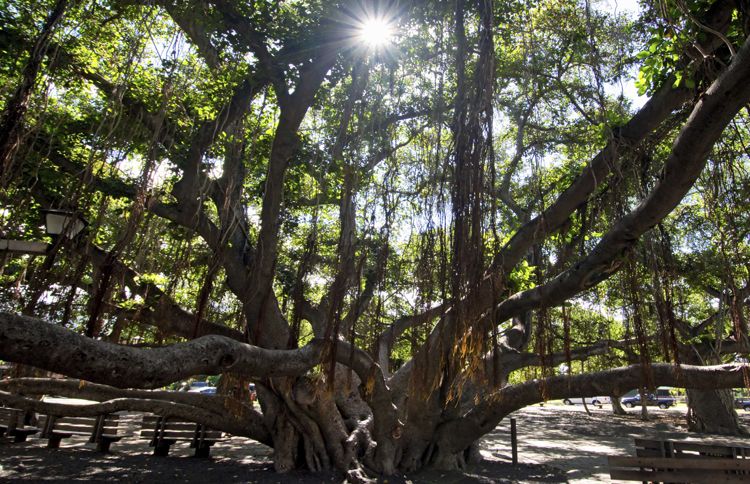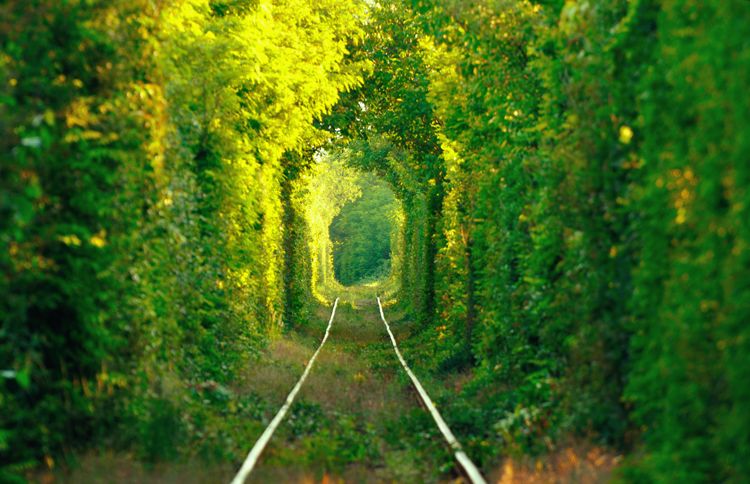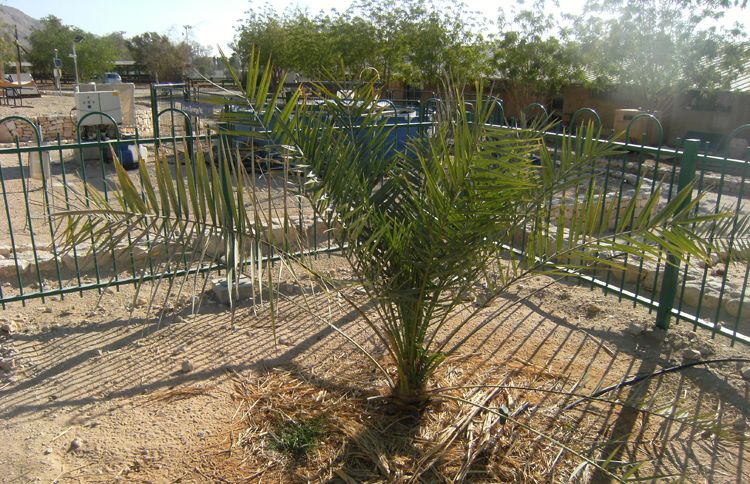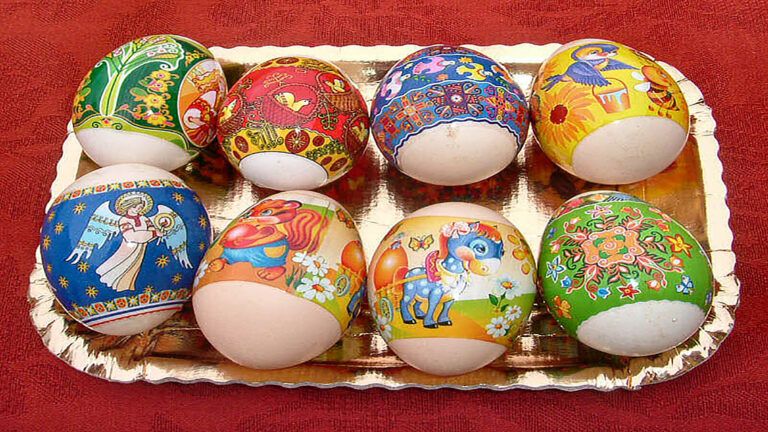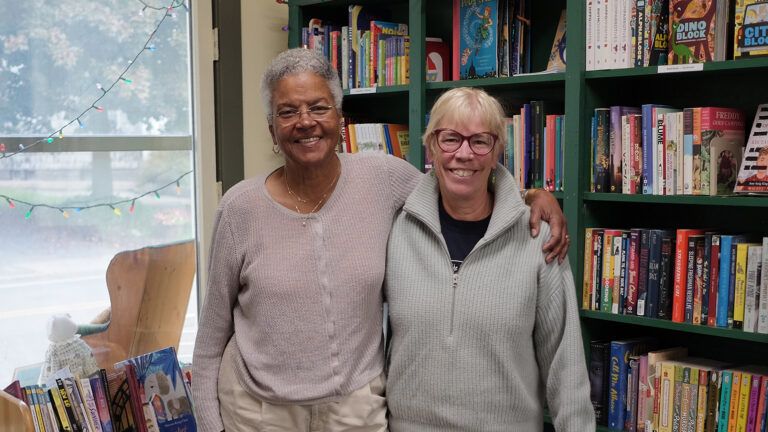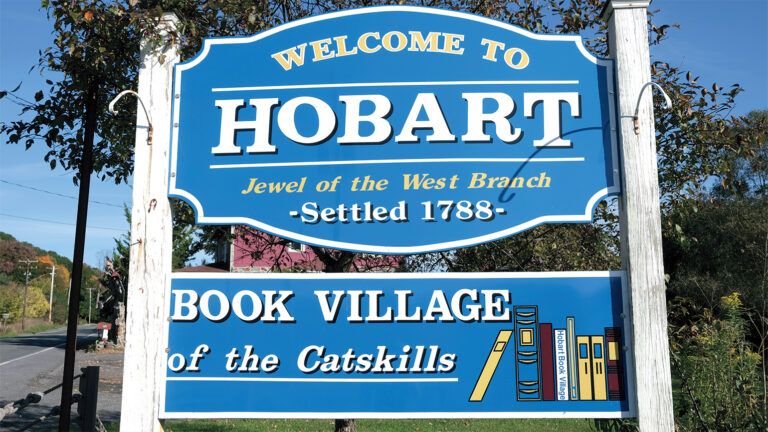I write poems for a living. Yes, poems. I run a performance-writing project called Poem Store. Basically it’s me, an antique typewriter and a sign (Poem Store. Your Subject, Your Price). I set up at outdoor markets, private events and schools, and spend the day writing poems for customers. I write love poems for tongue-tied guys. Poems for birthday celebrations. New Year’s resolutions. Commemorations of new love, new babies and new jobs. I’ve written poems for children, retirees and newlyweds. It’s incredible to know that my poems have an impact. Customers often cry when I read a poem aloud. Some return every week. Words are powerful, mysterious things. But not even I knew how powerful.
One Saturday morning, a man approached me at the farmers’ market in Arcata, California, the small coastal town where I started Poem Store several years ago. Arcata was once a thriving logging town. Now most of the timber companies have pulled out, replaced by a state university and a small but vocal community of environmentalists fighting to preserve the iconic redwood forests blanketing the hillsides. I wasn’t an activist but I did love the redwoods. That’s one reason I lived in Arcata. I am devoted to this planet we call home.
The man at the farmers’ market was unassuming. He had gray hair and a trim gray mustache, and he wore slacks and a Hawaiian-patterned golf shirt. He eyed me skeptically. I have long, unruly hair, several tattoos and a fondness for vintage flower-print dresses.
“What are you doing?” the man asked.
“I write poems for people,” I said. “You tell me a subject and I write you a poem. Pay whatever you want.”
“Hmm,” he said. “Okay. How about ‘being underwater’?”
“Being underwater is one of my favorite things!” I said. I thought for a moment and then typed out a poem about how “all the force of the world” lies in the “unknown place” deep under the sea.
The man’s face brightened as I read the poem aloud. “It’s perfect,” he said. He gave me five dollars, took a card with my contact information and stepped aside for my next customer, a little girl celebrating her birthday.
A few days later I got an e-mail from the man in the Hawaiian shirt. He introduced himself as Neal and said his hobby was scuba diving—hence the subject of his poem.
“I’d like to ask for another poem,” he wrote. “My beloved wife, Wendy, recently died of cancer. I’d like a poem I can read when my kids and I scatter her ashes at sea. I’m having a hard time finding something special enough. I’m going to send you a commemorative book about Wendy the kids and I put together. I trust you’ll find the right thing to say.”
I took a deep breath. I’d gotten all kinds of requests at Poem Store but never one so sad and heartfelt. I told Neal of course I’d write him a poem.
Neal mailed me the book. I spent several days reading it and meditating on what to write. At last I e-mailed him: “The poem is done. I’d like to present it in person.”
Neal suggested we meet for dinner. It was only then that I happened to notice the automatic signature at the end of his e-mail: “Neal D. Ewald, Vice President and General Manager, Green Diamond Resource Company.”
I froze. Green Diamond was one of the most controversial timber companies still doing business in northern California. Just recently, environmentalists had staged treetop sit-ins to protest the company’s plans to log and build houses on a prime 7,500-acre parcel of redwood forest near Arcata called the McKay Tract.
I was not a protester. But I definitely opposed destruction of old-growth groves like the McKay Tract. I knew those trees. You could see them in the distance from the highway south of town. They were majestic, often wreathed in fog, which gave them an otherworldly appearance.
Driving to meet Neal at the restaurant, I wondered what he would be like. I had no idea what to say to a flinty timber baron determined to chop down the trees I loved. And yet I already felt close to him after reading his family’s book and seeing what a loving man he was.
Neal wasn’t flinty. To my surprise, we hit it off immediately. I told him I’d noticed his e-mail signature and was curious about his work.
“You know the timber business?” he said.
“Well, I love the redwoods,” I said. “And I’ve heard of the McKay Tract.”
Neal’s expression hardened.
“But I haven’t formed an opinion,” I quickly added. “I’m open to all sides.”
Neal thought a moment. “Your openness is refreshing,” he said. “I’m going to be leading a tour of some of Green Diamond’s holdings soon for investors and community officials. I’d like to invite you along. You can decide for yourself whether the activists are right about us.”
I agreed to come, more out of politeness than anything else. Then I changed the subject to Wendy and the conversation bloomed. Neal’s caring heart expressed itself in everything he said about his late wife.
After dinner, we stepped outside and I read Neal the poem. I’d written of Wendy’s devotion to her family, her “patience in the face of mystery and misfortune.” I commemorated her “grace and acceptance,” her determination to live as if “everything is a gift.” I signed it, “By Jacqueline Suskin, with honor and thanks.”
I looked up to see Neal weeping.
“It’s perfect,” he said.
We stood in silence for a while. Then Neal gave me directions for the upcoming company tour and we said goodbye. Getting into his truck, he gave me a hug. I knew then we would always be friends.
Still, I was nervous driving to the tour. I’d done my best to prepare, researching the McKay Tract and the protests against Green Diamond. I even ran into an activist I knew nicknamed Farmer and asked if he had any questions for Neal. He didn’t. He said he wasn’t interested in compromise.
The tour began at a Green Diamond lumber mill. The sight of all those towering piles of redwood logs made me sick to my stomach. Yet I was curious.
Neal introduced me excitedly to the group, a bunch of men in suits and logging gear. I was the youngest person there and definitely stood out in my vintage blouse and jeans. Neal told me to ask as many questions as I liked. So I did, especially once we began walking through the redwoods. Green Diamond, it turned out, knew where every owl nest was on its property, where the salmon spawned and which trees could be cut without harming endangered species.
“Our goal is to harvest trees sustainably,” Neal said. “I wish I could make the activists understand that. We’ve made so many changes over the years, always seeking to run our business profitably but also protecting the health of the forest.”
Following the tour, I still had questions. Neal and I met for lunch later in the week—and then continued to meet many more times, sometimes for a meal, sometimes for walks in the woods, often with books to share and notebooks to fill with our collaborative ideas on sustainable harvesting. At first I couldn’t figure out why Neal made so much time for me.
Gradually I realized he was learning as much from me as I was from him. He had lots of questions too. He listened attentively when I described the forest as more than a resource—as a place where all of life was interconnected and where people could find spiritual solace in the trees. He kept asking what more Green Diamond could do to be a responsible steward.
He opened up to me about the ache he felt for Wendy. About his frustration that he was viewed as a villain. The more we talked, the more I saw that our friendship and wide-ranging conversations were steadily guiding Neal toward something far more radical than any treetop sit-in.
“This guy Farmer you talk to sometimes,” Neal said one day. “Can you give him a message for me? Tell him I’m not as opposed to preserving the McKay Tract as he thinks I am. I would love to compromise. Tell him to give me ideas I can actually say yes to, rather than outrageous demands that would harm my business.”
He smiled at me. “Talking to you has helped me put that into words.”
Farmer eventually reached out to Neal. They didn’t become friends, but they did exchange ideas. And then more people joined the conversation—activists from another local environmental group, some county officials and an organization called the Trust for Public Land, which teams up with communities to help preserve parks, farmland and open space.
In 2014, Green Diamond canceled its plans to log and develop the McKay Tract and sold 1,000 acres of lush redwood forest to the county, to be preserved as public parkland.
Now the whole community would see the Neal Ewald I’d gotten to know.
Of course, I’d already seen just how much trees mean to him. Especially one particular tree. One day he invited me to go hiking in a coastal forest near his house. We stopped at a large, very lovely tree and he showed me a plaque he’d made himself and tacked to the trunk. On the plaque was a poem, written by Neal:
“Wendy S. Ewald
1961–2008
Tell me that you love me
Please don’t ever leave me
I cannot live without you.”
Maybe our friendship gave Neal the nudge he needed to express his love in words—and in deeds. But I like to think it was the woods too. The divine presence in nature. That presence is a mysterious, powerful thing.
This story first appeared in the April 2016 issue of Guideposts magazine.
